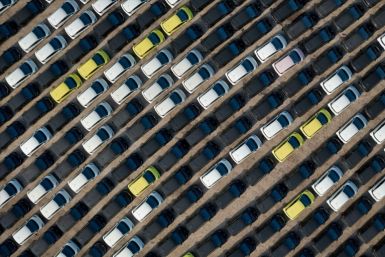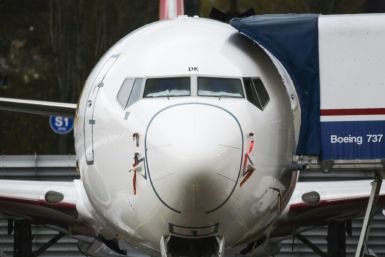2012 Mayan Calendar: 10 Best Vehicles to Survive Doomsday (VIDEOS)
In two days, the world would finally know if the Mayan prophecy would lead to destruction or prosperity. In a run-up to Dec 21, preparations have been made by doomsday preppers just in case something does happen globally. It is expected that if the Apocalypse scenario would take place, chaos will hit the economy, health, welfare, shelter, food, and energy sectors.
Running is going to be the first thing people will do once chaos starts to evacuate everyone out of the area. Besides a doomsday-proof shelter, what kind of vehicles is ready for survival of a cosmic catastrophe? What type of natural disaster can these vehicles withstand? Can it protect an entire family during evacuation?
Here the 10 nominal vehicles for ultimate survival.
1. Earth Roamer XV-LT
The Earth Roamer XV-LT is a modified truck bed camper attached to a Ford Super Duty F-550 truck chassis with twin turbo diesel engine, 10,000 pounds of towing capacity, solar-powered with large batter back up pack, 85 gallons of fresh water capacity, dual water filtration system, cassette waste management system, and propane free appliances making everything run on diesel fuel.
Pros: It is a heavy-duty vehicle with a lot of survival gears, including an option for twin .50 caliber machine gun.
Cons: Not design for 8 or more people and expensive, with a minimum price tag of $225,000.
2. All Terrain Vehicle or ATV
As the name suggests, it can go through almost any obstacle on the road. It is powered by heavy-duty engines, 4-wheel drive and aggressive tyres with a width of only 48 inches or less. It can be upgraded to fit with the needs of the owner, including a small utility trailer to go behind the ATV for more carrying capacity.
Pros: Designed for many terrains, including difficult ground at great speed and pretty much affordable especially if it's a second-hand.
Cons: Limited protection from elements like weather, limited range because of fuel capacity, limited carrying capacity, and limited number of passengers that can be accommodated.
3. Sports Utility Vehicle or SUV
This is another best bet for ultimate survival during catastrophe. SUVs have good engines, travel great distances on full tank, and 4 fairly aggressive tires that can traverse most terrains. It is an everyday vehicle which has a roof rack, towing capacity, and seats for 5 or more people.
Pros: Good carrying capacity, good distance covered a sleeping place as well.
Cons: Below average fuel efficiency, modification required for extreme terrains.
4. BMW R 1200 GS Adventure
A BMW motorcycle is designed for extreme travel and efficiency. This motorcycle is equipped with 8.7 gallons of fuel tank, cruising range of up to 465 miles, extra gas storage, and reinforced aluminium side bags and top cases for secure extra storage.
Pros: Great distance coverage, very fuel efficient, good off road capability and very fast.
Cons: Single person is its safest mode, limited carrying capacity and exposure to elements.
5. The Campa EVS (Expeditionary Vehicle System)
This is a state-of-the-art vehicle designed for outdoor enthusiast, disaster management personnel, and military officials who want a complete self-contained vehicle system. Features include ammo boxes, water purification system, and a pop out tent.
Pros: More fuel capacity compared to larger trucks, emergency survival needs, full kitchen and truck chassis upgrade for off-road ability.
Cons: Limited passengers who can compromise towing capacity, tent set up can be difficult during bad weather.
6. The Unicat
For individuals who do not mind spending, this could the one vehicle they would need to purchase. Unicat comes with 112 gallons of fresh water capacity, satellite communications, all wheel drive, 2 x 120 gallons of gas tanks, water fording capability over 5 ft, extra retractable bolts, and cylinder locks for securing doors, windows, solar power and more.
Pros: It is a monster designed which can crush anyone who stands in its way, heavy duty protection.
Cons: Very expensive, at least $600,000 for one unit.
7. Jeep Wrangler
This vehicle is a class of its own because of two great advantages. One is its ability to travel almost anywhere like an ATV and two is the versatility of its parts from tyres to under armor protection. Every part is easily available and customisations can match owner's imagination such as having a snorkel for deep waters.
Pros: Great off-road capability, great market availability of parts, decent distance covered, good speed and can pull travel trailers.
Cons: Limited carrying capacity, difficult as a sleeping quarter.
8. The Modern "Blue Water" Sail Boat
Most survival vehicles are based on land and it's natural because humans lived on the ground since the beginning of time. But just in case there are no more nearby places safe for the whole family, it would be time to cross from one island to another. The Blue Water Sail Boat offers fresh water conversion, access to fresh food, kitchen, utilises solar and wind energy, and has a powerful diesel engine. The sail boat can use wind energy to move in any direction except against the wind, which means it can travel a 315 arch without using fuel.
Pros: Total isolation from people, comfortable living space, endless range
Cons: Vulnerable to sea disasters, back up of other nutrient sources like vitamins and no wind, no movements.
9. The Knight XV
Got extra cash and a parking spot? This vehicle would be the one of the best for residents of highly urbanised areas such as New York City. It is a 13,000-pound assault vehicle equipped with arrays of defenses such as magnetic bomb detection, external smoke screen, night vision cameras, and electrostatic window with tinting system, and can run on flat tires, and deflects .50 caliber rounds. Additionally, it has heated seats.
Pros: Features are designed for high environmental threats
Cons: Expensive vehicle, more protection but less in sustainability features like kitchen or water storage.
10. The Human Body
Although it is not a vehicle, the human body will be the last resort during survival when everything else fails. Our bodies can do a lot of things in every scenario and it includes survival techniques. Situations requiring walking, running, climbing, and swimming are all possible using the human body.
Pros: No fossil fuels needed, adaptability, can cross any type of terrain, very cost effective and can be very quiet if needed.
Cons: Limited carrying capacity, low speed, limited protection from elements, and difficulty for traveling of young ones and elders.






